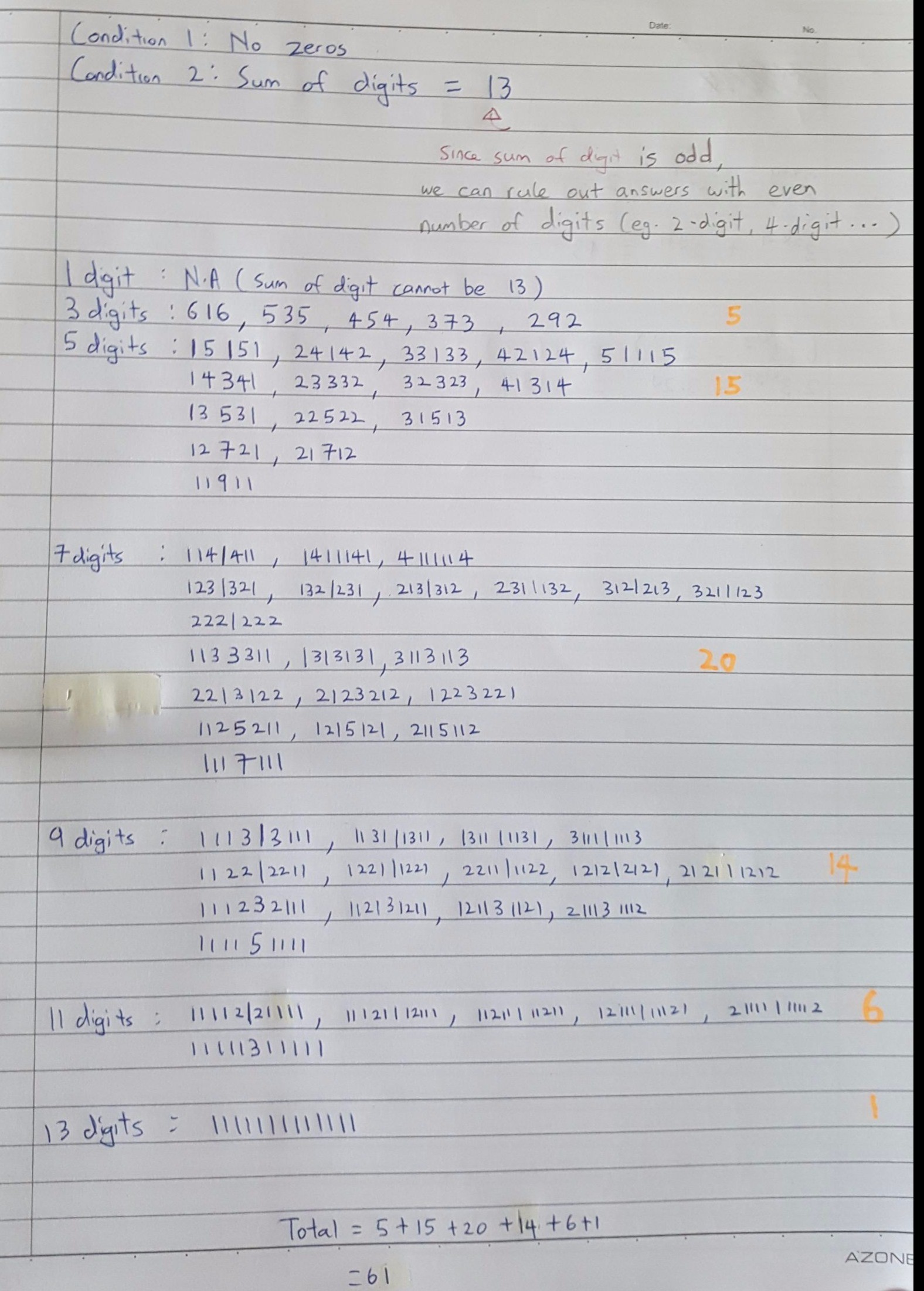Dan yong's answer to Jack Black's International Baccalaureatte Maths HL question.
done
{{ upvoteCount }} Upvotes
clear
{{ downvoteCount * -1 }} Downvotes
I did it the longer way, i hope my answer helps. The logic is similar to the other answer. Start by deciding the middle number of your possible answer, and the mumber of digits that your answer has (e.g XY1YX).
Since the digit "1" is selected in our example, and the sum of all digits is 13, therefore X+Y=6.
Continue the process for different middle number (1,3,5,7,9) and number of digits of your answer (3-digits, 5-digits, ... ... 13-digits).
Since the digit "1" is selected in our example, and the sum of all digits is 13, therefore X+Y=6.
Continue the process for different middle number (1,3,5,7,9) and number of digits of your answer (3-digits, 5-digits, ... ... 13-digits).
Date Posted:
6 years ago
Answer should be 62. One case is missing in your solution. :)




